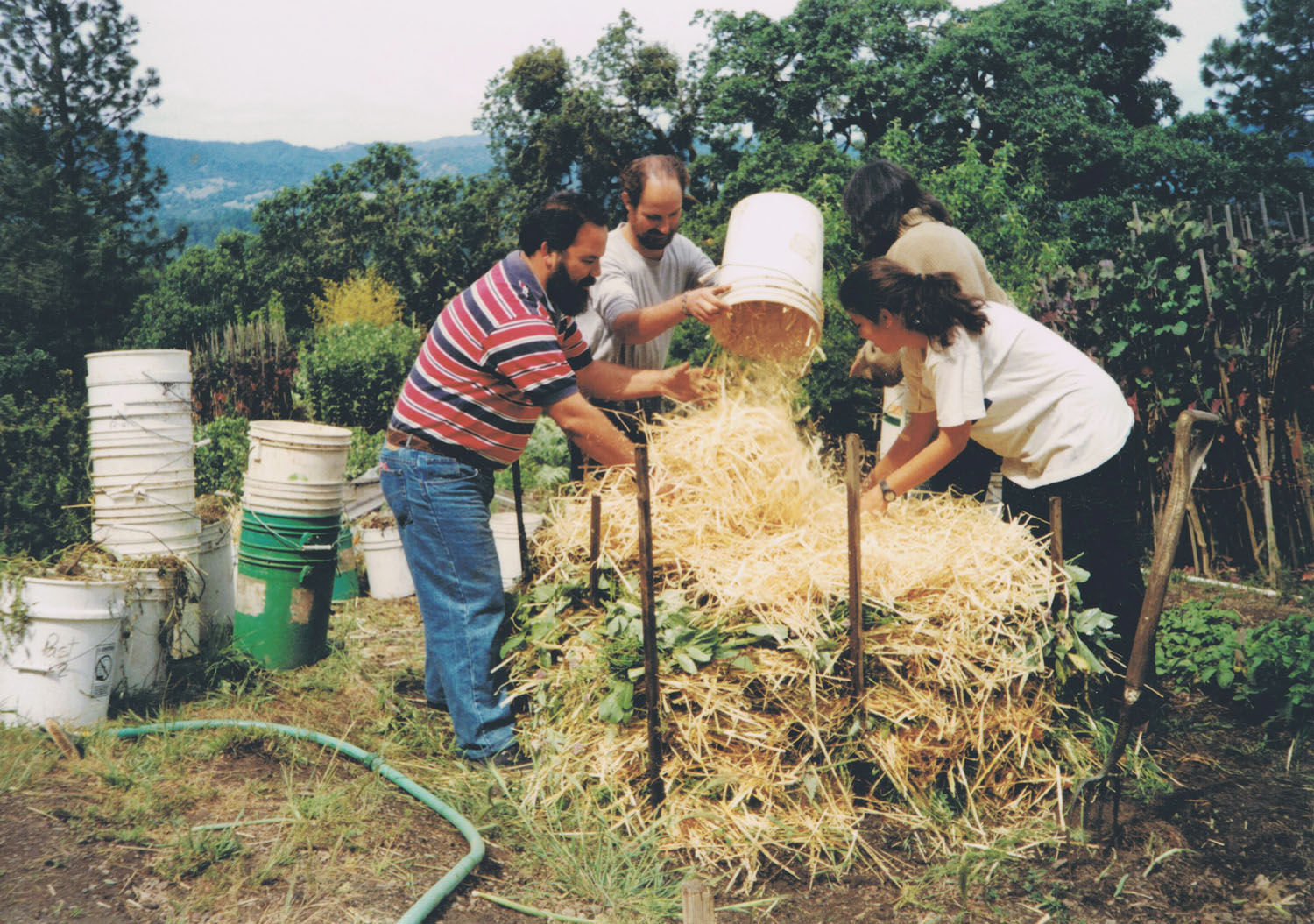Five Factors of GB Compost
Ecology Action has discovered five factors that enable GROW BIOINTENSIVE compost to have much more power quantitatively and qualitatively: 1. More uncured compost is created due to higher crop yields. The result can be up to 2 to 6 times the cured compost. 2. More compost may be created when using a cold composting process.
3. Building a pile with a carbon/nitrogen ratio of 45:1, instead of 30:1 or 60:1. Over time the 45:1 cured compost consistently produces higher yields of grain and biomass. In one test comparing these three types of compost, the 45:1-derived cured compost produced double the grain and dry biomass yields. 4. Building a pile which uses more structural forms of carbon (cellulose and lignin—mature straw and stalks) and less metabolic forms of carbon (sugars and starches—immature leaves and stalks). The result is a more durable, lasting cured compost. 5. Maintaining the curing compost piles carefully. Accurately build the pile according to instructions given in How to Grow More Vegetables, 2018, 9th ed.:
A cured compost pile that has been properly maintained may contain up to 20% or more humus than the more usual 8% to 10%! All cured compost is not equal. One cubic foot of cured compost may have double or more nutrients than uncured compost. As more agricultural lands become desertified, having sufficient compost is going to be the most important thing in food-raising. This is because it enables the soil to retain water and nutrients. The next time you build a compost pile, consider using the GB method and see if the results are better than average. For a more in-depth discussion of composting and compost application, see Ecology Action's Compost Application Guides and GB Compost Protocol
top | Newsletter Home |Table of Contents| Archive
|



